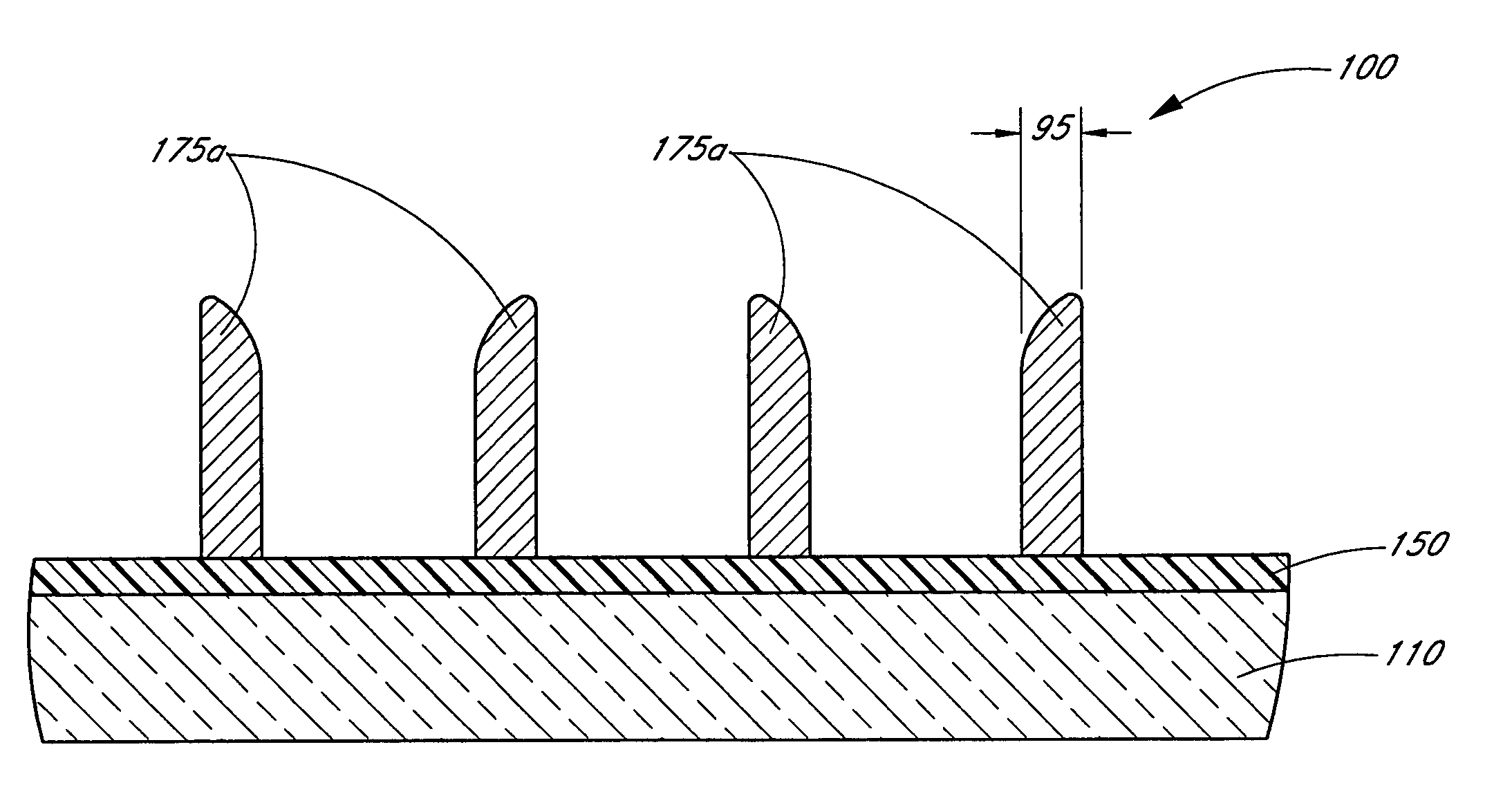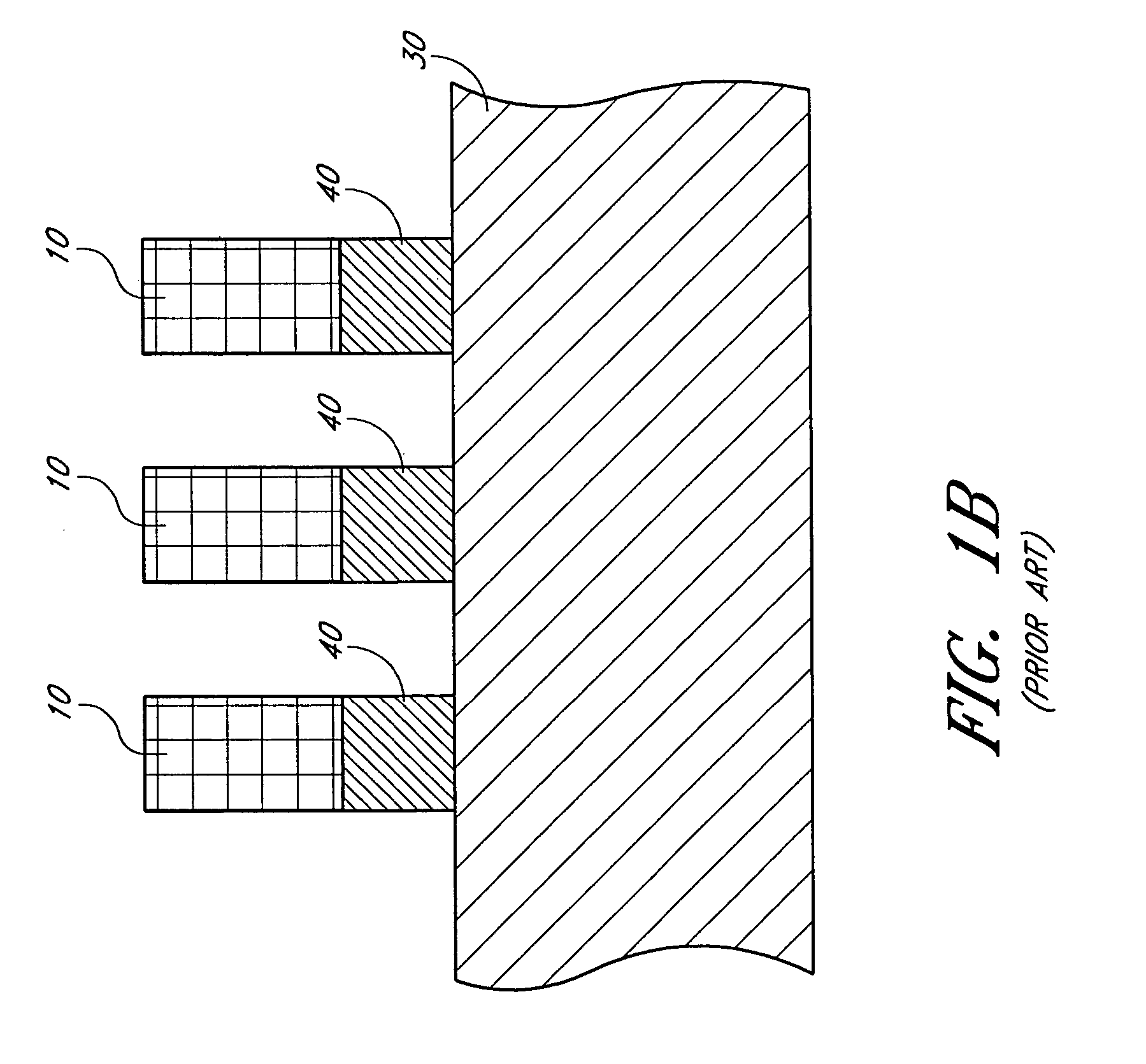Mask material conversion
a mask material and conversion technology, applied in the field of masking techniques, can solve the problems of unfavorable photolithographic techniques, poorly defined, and non-uniform features in the substrate,
- Summary
- Abstract
- Description
- Claims
- Application Information
AI Technical Summary
Benefits of technology
Problems solved by technology
Method used
Image
Examples
Embodiment Construction
[0042]It has been found that the poor quality of some spacer patterns is due to difficulties depositing conformal layers of spacer material and / or etching this material to form spacers. Because spacers are typically formed out of the vertically extending parts of blanket layers of spacer material over a complex mask topography, the conformality of the layers will affect the uniformity, e.g., the widths, the heights and the physical placement, of the spacers formed from the layers. It will be appreciated that the more conformal a layer is, the more closely it replicates the shape of the surface on which it is deposited.
[0043]As critical dimensions continue to decrease, however, the aspect ratios of the spaces, or openings, between mandrels continue to increase. This is partly due to the desire to pack features more closely together by reducing the widths of the spaces between mandrels. In addition, in common methods of transferring patterns, both the spacers and an underlying layer a...
PUM
| Property | Measurement | Unit |
|---|---|---|
| wavelength | aaaaa | aaaaa |
| wavelength | aaaaa | aaaaa |
| wavelength | aaaaa | aaaaa |
Abstract
Description
Claims
Application Information
 Login to View More
Login to View More - R&D
- Intellectual Property
- Life Sciences
- Materials
- Tech Scout
- Unparalleled Data Quality
- Higher Quality Content
- 60% Fewer Hallucinations
Browse by: Latest US Patents, China's latest patents, Technical Efficacy Thesaurus, Application Domain, Technology Topic, Popular Technical Reports.
© 2025 PatSnap. All rights reserved.Legal|Privacy policy|Modern Slavery Act Transparency Statement|Sitemap|About US| Contact US: help@patsnap.com



